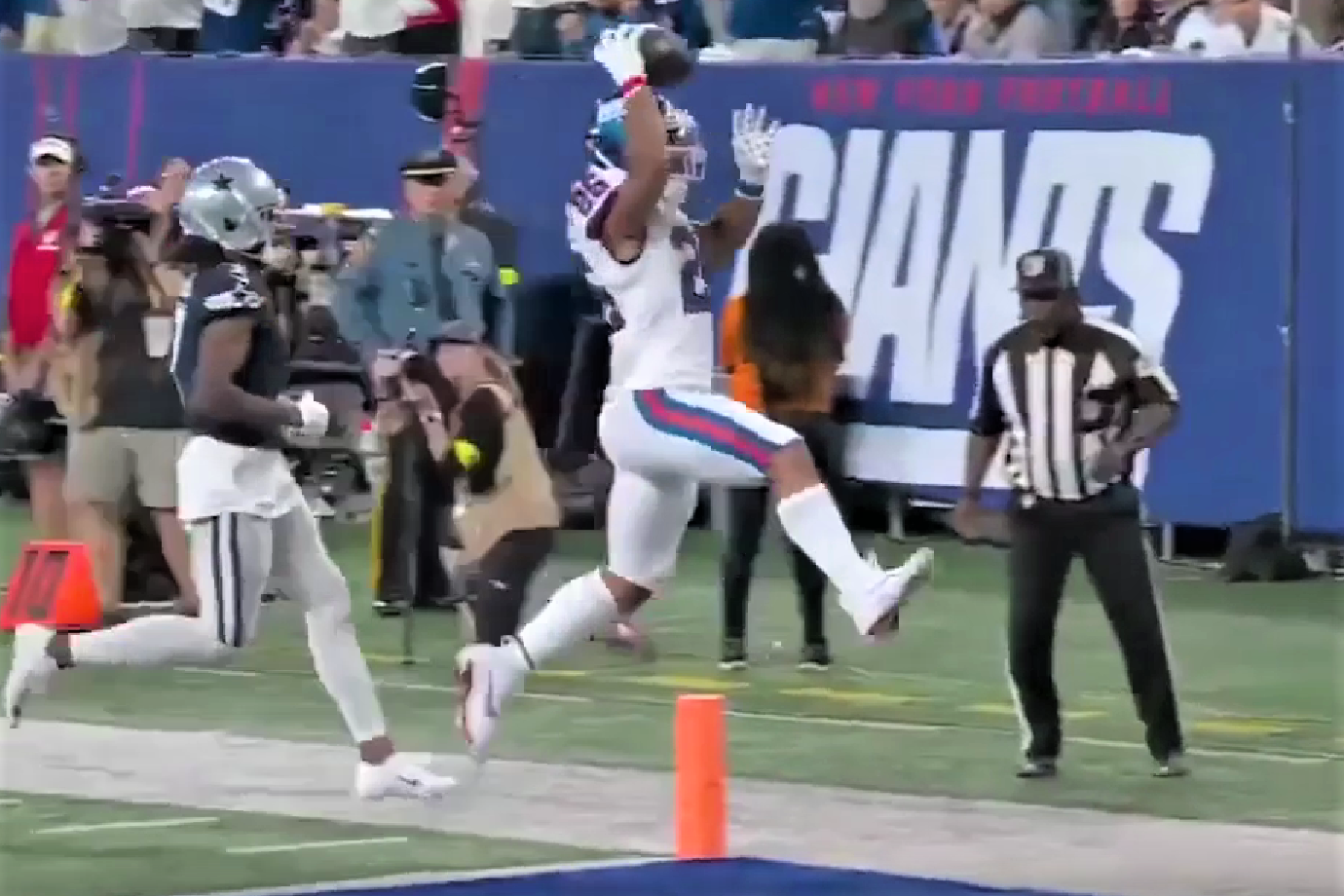16 Games, Sept. 22/25/26, 2022
337+2/232\
Week 3: 70 touchdowns, 7 ATDs
DET@MIN: Outside the lines
As mentioned elsewhere on this site, one of our big beefs with the break-the-plane rule is how it gives ball carriers an extra-wide end zone that gives them more space for eluding would-be tacklers.
Here Detroit’s Charles Harris (53) has a pretty good pursuit angle on Minnesota RB Dalvin Cook as Cook runs left. We presume Cook senses it will be tough to turn into the end zone, so he chooses the easier route — just wave the ball over the goal line, make it appear you have dented the Great Invisible Plane, and don’t sweat where your feet land. Sidelines don’t matter at that point.
To us, that seems like a cheap shortcut for six points and an insult to defensive effort. For years this has been an out-in-the-open secret enjoyed by offenses and no one seems to dispute it. Some reassessment is in order. Rating: 3.5
Video and images: Fox Sports
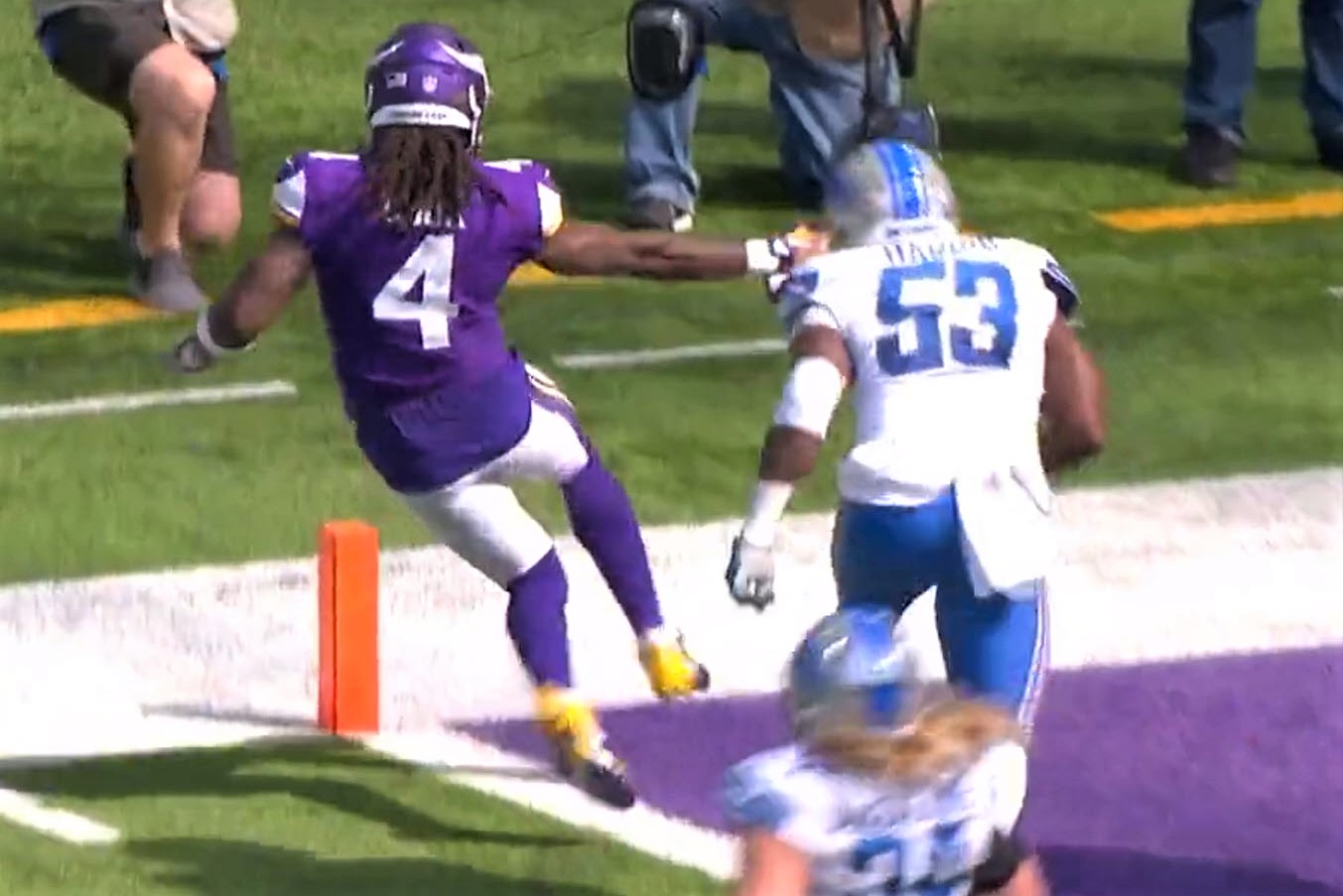
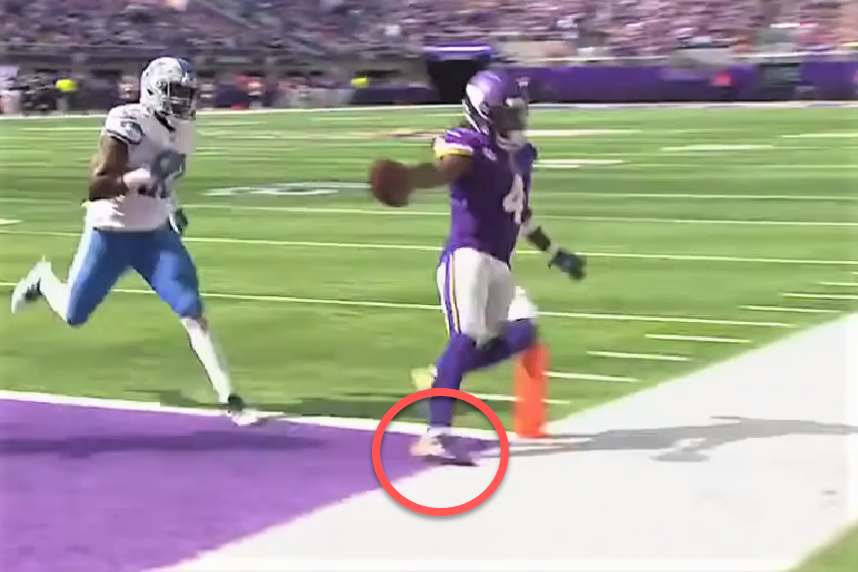
DET@MIN: Close, but we say no TD
On this tight sidelines play, which came first — Jamaal Williams’ leg or elbow?
Using the parameters of our proposed rule, had the Detroit WR’s leg first contacted the goal line, we would rule touchdown.
Yet based on the somewhat blurry screenshots we were able to retrieve (we confess FixTheRule operates on modest means, if that has not already been apparent to readers), we believe Williams’ elbow contacted the sideline first, meaning he is out of bounds. Lions ball, first-and-goal inside the 1.
Fans accustomed to the break-the-plane rule will feel exasperated by that call. “He’s across the line; give him the touchdown.” We understand that thinking. We counter with this: The majority of airspace touchdowns are ugly, uninspiring plays that diminish the quality of play. For the sake of being consistent with the letter of the law, Williams’ fine effort must be ruled out of bounds. Rating: 3
Video and images: Fox Sports
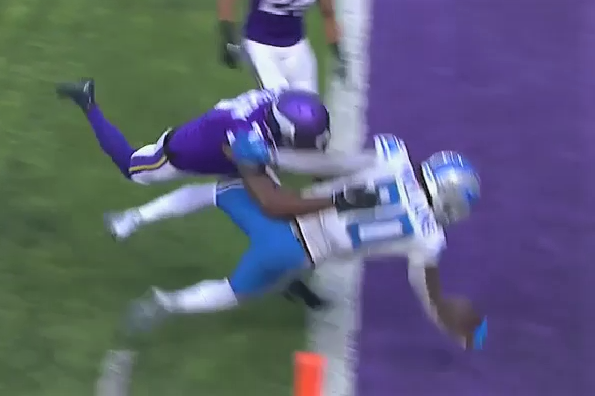
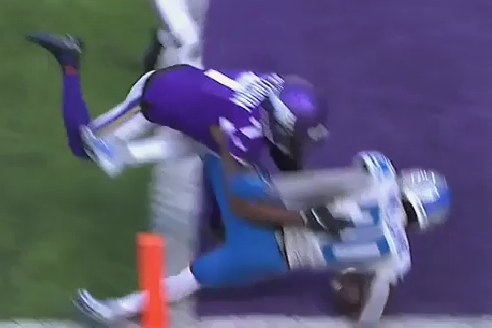
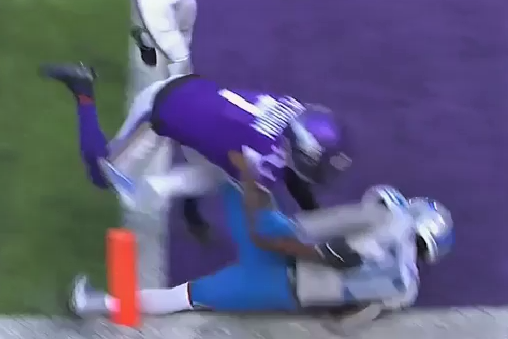
PIT@CLE: Close enough? Guess so
Apparently officials ruled the ball in the right arm of Pittsburgh QB Mitch Trubisky broke the Great Invisible Plane a split-second before the knee-down moment captured in the screenshot below occurred.
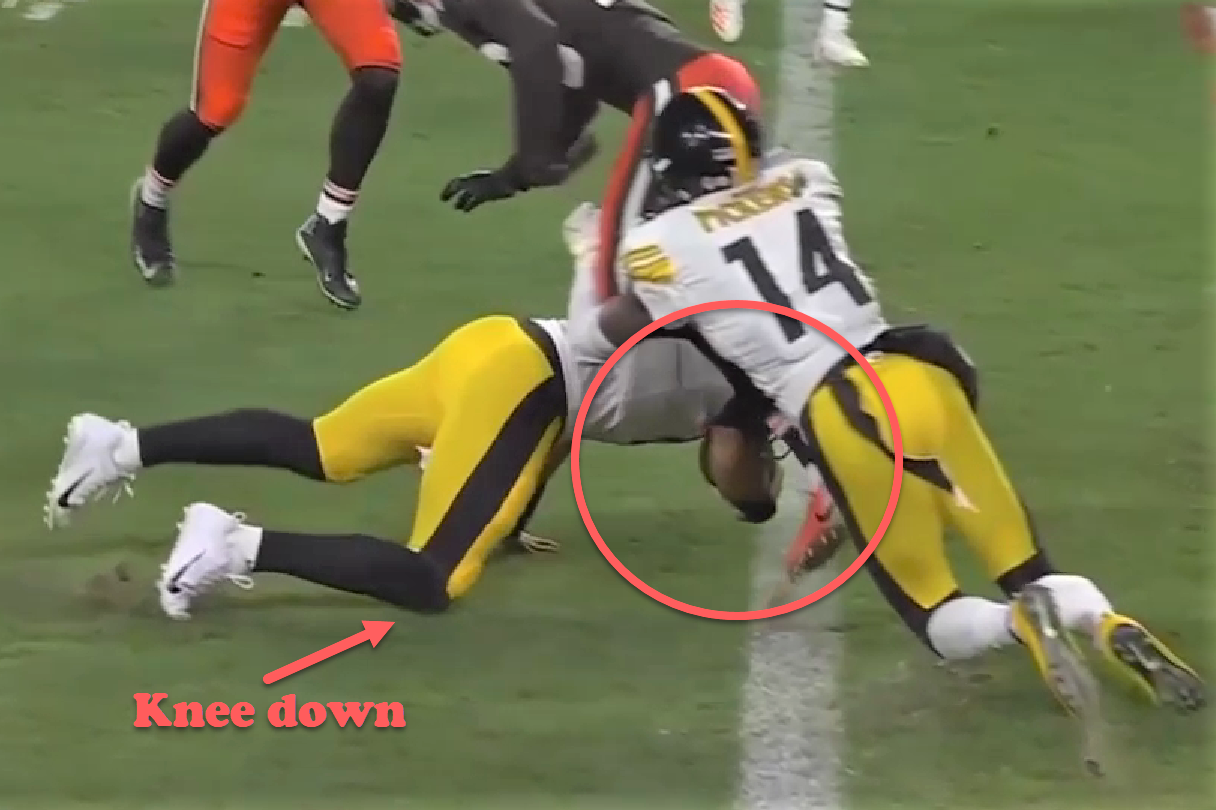
Announcers Al Michaels and Kirk Herbstreit debated whether either of Trubisky’s knees touched/grazed/levitated without reaching consensus. This is a key reason why we prefer our rule, which mandates a ball carrier make contact with the end zone in order to be awarded a touchdown. We’re not fond of guesswork when it comes to dishing out six points. Hocus Bogus rating: 4.5
Video and image: NBC Sports/Amazon
HOU@CHI: An end zone untouched
Did Chicago’s Khalil Herbert do enough to be awarded a touchdown on this play?
If you make your judgment using the existing break-the-plane rule, yes. He obviously has extended the ball into the end zone’s airspace.
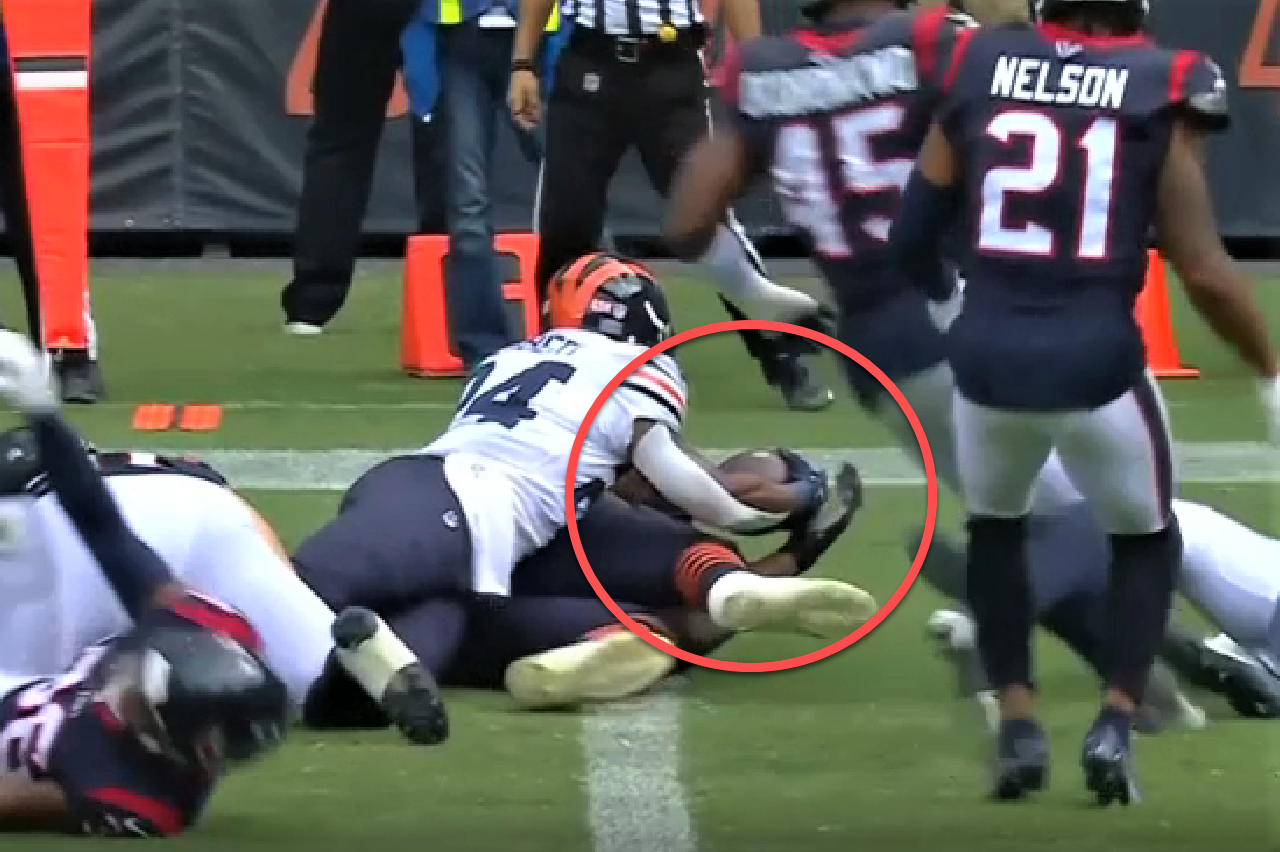
Yet if you make judgment using our proposed new rule, no. Herbert’s knees are down in front of the goal line and neither he nor the ball have contacted the end zone. Our rule requires ball carriers to make a first point of contact on or beyond the goal line. You want six points? Make contact with the end zone. Rating: 3
HOU@CHI: ‘And he is . . . ‘
Announcer Andrew Catalon must wait a few moments for refs to make a call on this goal line scrum involving Chicago’s Khalil Herbert. Eventually arms go up and Herbert receives his second airspace touchdown of the game. No offense intended, Khalil.
Herbert’s upper body cracks the Great Invisible Plane, but his feet, as shown in the screenshot below, never get to or beyond the goal line. Nor does his upper body. It’s resting atop the strata of other players involved in the fray. To earn six points, we require a ball carrier to make contact with the end zone’s surface, not just conveniently flop on a crash pad formed out of other players. Rating: 3
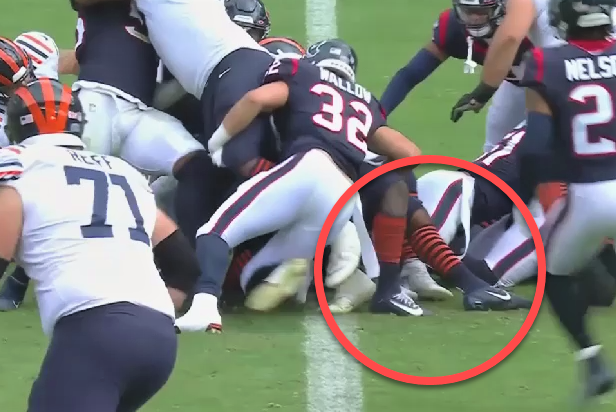
LV@TEN: If he’s not in, he’s not in
Here’s the same ruling discussed in the play above. Tennessee’s Ryan Tannehill has clearly broken the Great Invisible Plane. Yet our rule, which aims for a higher performance standard than is found in the break-the-plane rule, requires a ball carrier to make contact with the end zone, not just float on top of other players. If you want to be ruled in for a touchdown, then get in. Rating: 3
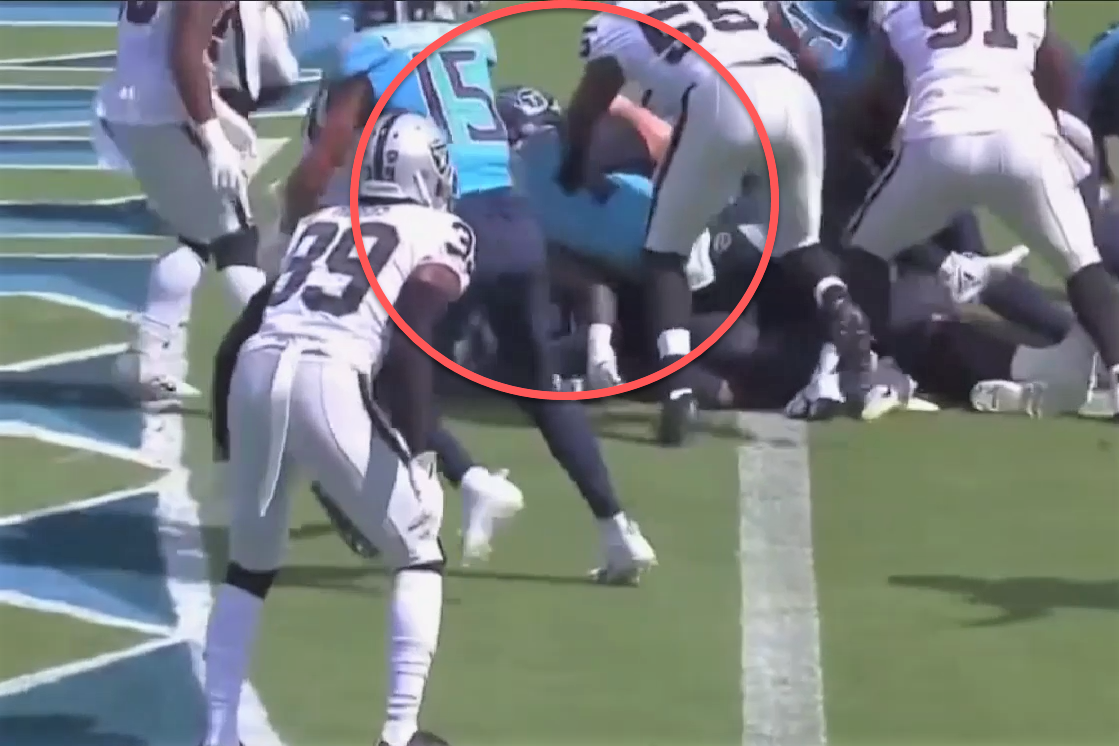
Video and images: Fox Sports
DAL@NYG: He’s got hops
Perhaps no one enjoys the break-the-plane rule more than New York’s Saquon Barkley. As noted in Week 5 and Week 13, Barkley enjoys celebrating breakaway scores by leaping over the goal line and flipping the ball skyward while he’s in midair. And why not? The rule allows it, so have fun. Make it your signature move.
But if by some miracle or rule was ever adopted (ball carriers must contact the end zone in order to be awarded a touchdown, Barkley would have to rethink his approach. Rating: 1
